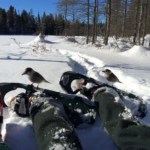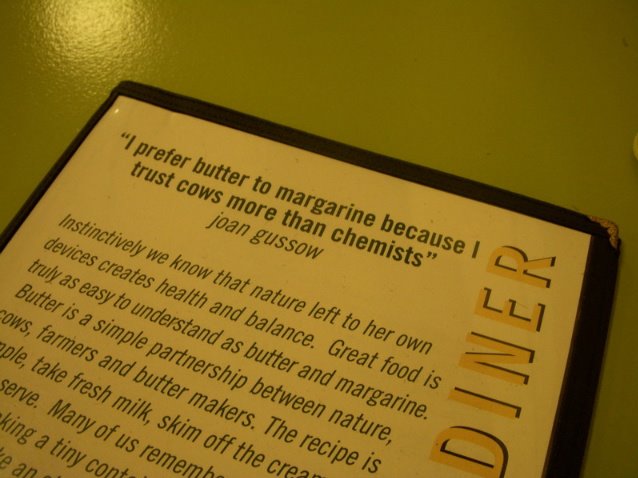Note: I'm cross-posting this from the blog at my friend's website The River's Path, where I'm a new contributor.
If you are reading this, you might be familiar with the fruits of a personal connection to nature —nourished by the memory of a tree or a river from your childhood, or the birds or deer that regularly pass through your backyard. Even if you move or travel frequently, perhaps there is some omnipresent element of the natural world that can ground you wherever you are—for me it is the feeling of the sun on my face, or a view of the vast stellar clockwork of the night sky turning around the still point of the North Star. These encounters remind me that wherever I go I am held by ever-greater concentric circles of being. Being “friends” with particular plants or hills or rivers, or with sunshine or starlight, by which I mean loving them and on some level needing them, have been part of my experience of “home.” And when I haven’t felt at home, at least my experience of the home of my body.
The emotional and spiritual value of the natural world is hard for our culture to quantify, hard to monetize and market, but that doesn’t mean that it is superfluous. Actually, it is often an unacknowledged facet of what we consider sacred, special, safe, novel, or memorable. Personal relationships to elements of the natural world are much more emotional—characterized by affection, awe, or nostalgia—than they are abstract or intellectual. They are friendships, kinships. There was a time when I might have thought that these sorts of relationships were restricted to childhood. But today I am more and more convinced that they are also the domain of adulthood—at least, the kind of adulthood I want to inhabit.

A beloved white birch at my grandparents’ former home in Vermont’s Green Mountains.
My time as both student and instructor in the fields of nature education and nature-connection has begun to teach me many useful things—how to make fire-by-friction, how to identify edible and medicinal plants, or how to track and trail wild animals. But the most important (and humbling) lesson impressed upon me has not been something new, not a skill or a bit of information, but a reminder of something old: the validation of the emotional richness of my experiences in the outdoors and with animals—experiences that never seemed to fit comfortably in any readily accessible interpretation of the world.
The feel of the northern hardwood forests of Vermont where I grew up, the smell of my family’s orange tabby cat, or the sight of a herd of sheep grazing in a field, are fundamental to my personhood in ways that seem to upend and subvert what I’ve been taught about being a person. Perhaps it is because these things are fundamental not just to ‘who’ I am, but ‘what’ I am. In an era brimming with political and social identities, certain labels, though powerful in their own right, still can only take me so far in such a quest. Indeed, such affiliations help answer who I am within the human world, but not what I am by virtue of my relationships to the non-human world. By these latter measures I am an acquaintance of maple trees, a creature that cuddles with cats, a guardian of sheep, and sometimes more, sometimes less. In this realm, one communicates simply by being, by moving, by looking. In this realm, one is simply a friend of things, or an eater of things, or, occasionally, food for things. One is a creature.

Gray Jays—one of the north country’s most charming solicitors of treats—visiting my spouse and me in Algonquin Provincial Park.
I have found that I cannot know this creature-hood merely by relating with other humans. I can only know it by also relating with non-humans—with landscapes, animals, tracks, fire, with bone and wood—as well as with humans. It is balanced on this edge, where relationships with both human society and non-human society can be mutually cultivated, where I have felt a deep kind of belonging take root in my heart—an enigmatic feeling of being hugged by two very different parent-worlds that nonetheless are fated to intertwine through me. I want ardently for this medicine to be available to anyone whom it might help, which is one reason I work as a nature educator and guide. Teaching wilderness survival skills is an awesome perk for me, but I also am an advocate for a more surreptitious survival skill: cultivating relationship with as many parts of one’s surrounding ecology as possible in as many ways as possible. Even if we don’t need these “survival skills” for our bodies, we might need them for our souls.
There are many ways to relate to a tree, for example—you might sit in its shade with your back against its trunk, or climb it to look at something far away. How is its wood for carving? For fire? Is any part of it edible—its leaves or its inner bark? How might you find out such a thing? Could you make clothing or medicine from it? Maybe! What animals use this tree for food or shelter? What birds does it attract? On a slightly different note, what does this tree mean to you? Maybe you built a fort in this tree, buried your family pet under this tree, or cut your wedding cake under this tree. Maybe this tree has witnessed something monumental.
Do trees in general symbolize anything to you, and why? And what might this tree—or trees in general—signify to your ancestors, within their mythology or their livelihood? What about to the people who are indigenous to this land? What if the people indigenous to this land say that their ancestors were actually born from this tree? If this is a common tree in this area chances are it was (and is) very sacred, very useful, to someone—certainly an animal, but also a human, even maybe an entire culture. This is indeed an unwritten rule of human ecology. Is there a way you could honor this tree or thank it? If the last question seems to be getting into cryptic or far-fetched territory, I get it. But believe me, if you learn all the other things about the tree, you might actually really want to thank it.

My ode to the white birch, ethereal denizens of our northern forests. From top left: Chaga, a medicinal fungus that grows inside birch trees, highly prized by northern latitude peoples; a utensil carved from birch wood; birch bark baskets made at Roots School in VT; the beginning of a bow drill fire kit made with white birch.
One could call such multifaceted connections—ones that inspire praise and thanksgiving—spiritual. I do, though this term may not work for everybody. Whether you choose to look at them as spiritual, emotional, or both, there is an undoubtedly numinous nature to such relationships, as there is to any close human bond. There is a feeling of empathy, of togetherness and community, yet at the same time a mystery, something coy and esoteric—the allurement of undeniable difference. There lies the magic, the potency, and the deeply transformative nature of relationship and our human capacity to relate. If we can recognize (and name) that we have the ability to relate to plants, animals, and landscapes in a more interpersonal way—the way we relate to a beloved family member, a pet, or a dream—we can shift our center of gravity in remarkable ways. We can, perhaps, feel even more at home in the world than we thought possible.
As this shift takes place it is imperative for us to humble ourselves with the fact that relating to nature in emotional and social ways wasn’t invented yesterday—this is the well-trodden territory of shamanistic and animistic cultures the world over. It would be much more accurate to say that relating to nature in these ways ‘invented us.’ Certainly, we are alive today because our ancestors intimately knew the natural world, both in a utilitarian sense and in a spiritual sense. Those things, I think, used to be intertwined…it is only some modern cultures that parse them out and see them as different, for better or worse.
It is no coincidence that many nature-based cultures consider their environment populated with legions of spirits and forces that are stewards and shepherds of nature, of the elements, of the turning of the earth and the movement of the clouds, or that they consider non-human animals or trees as persons—as beings with a soul. Relationships with these beings became personal, intimate, emotional, and social—not because someone thought it was a hip idea or because it made theoretical sense, but because of the demands of living in a world that was both ever shifting yet in certain aspects stayed the same. In a subsistence life where so much is uncertain, one does well to get to know one’s neighbors, and to duly honor them. Some day—or maybe even most days—our lives might depend on them.

Some natural objects that decorate my living room, reminding me of just a few of the beings that silently support us.



No comments:
Post a Comment